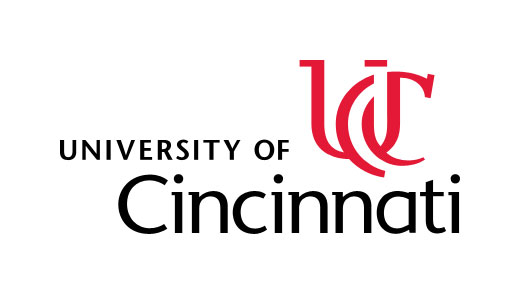Get With the Guidelines in ED Patients With Heart Failure
| Status: | Recruiting |
|---|---|
| Conditions: | Cardiology |
| Therapuetic Areas: | Cardiology / Vascular Diseases |
| Healthy: | No |
| Age Range: | 21 - Any |
| Updated: | 4/6/2019 |
| Start Date: | October 2015 |
| End Date: | August 2019 |
| Contact: | Sean Collins, MD |
| Phone: | 615-936-0253 |
Approximately 20-30% of patients presenting with acute heart failure are discharged from the
ED. Compared to patients discharged from the hospital, they more frequently return to the ED
and hospital for further management. While inpatient discharges are often enrolled in
transitions programs and have their care tailored to evidence-based recommendations, ED
discharges do not. The investigators propose to evaluate current standard ED discharge to an
ED-based intervention which will transition patients to outpatient follow-up on
guideline-recommended therapy.
ED. Compared to patients discharged from the hospital, they more frequently return to the ED
and hospital for further management. While inpatient discharges are often enrolled in
transitions programs and have their care tailored to evidence-based recommendations, ED
discharges do not. The investigators propose to evaluate current standard ED discharge to an
ED-based intervention which will transition patients to outpatient follow-up on
guideline-recommended therapy.
Heart failure (HF) is common and growing healthcare concern. Heart failure affects nearly 6
million Americans. It results in over one million annual hospital discharges as the primary
discharge diagnosis and an additional two million hospitalizations where HF contributes to
the discharge diagnosis. Despite a relative reduction in the hospitalization rate of HF, the
actual number of HF hospitalizations remains over one million annually. This figure is
expected to significantly worsen with the aging United States population and the growing HF
prevalence. Over 80% of patients who are hospitalized are initially seen in the emergency
department (ED). However, not all those seen in the ED for HF are admitted; a sizeable
proportion are discharged home without hospitalization. As disposition decisions for those
who present to the hospital rest largely with ED providers, the ED will play an even bigger
role in the management of HF patients and in avoiding unnecessary hospitalizations.
The ED is the gatekeeper for AHF evaluations. Nearly one million ED visits for acute heart
failure (AHF) occur annually in the United States. Importantly, the ED is the safety net for
AHF care and often sole provider of AHF care to vulnerable patients. To optimize care and
reduce ED and hospital revisits, there has been significant emphasis on improving transitions
at the time of hospital discharge for HF patients. Such efforts have been almost exclusively
directed at hospitalized patients; individuals with AHF who are discharged from the ED miss
the benefits of transitional care initiatives.
Ensuring optimal transitions of care for discharged ED AHF patients is a critical unmet need.
Data show AHF patients discharged from the ED receive suboptimal guideline directed medical
therapy (GDMT), suggesting interventions to improve AHF transitions are needed in the ED
setting. This is particularly true for patients that are in resource limited settings, many
of whom have vulnerable characteristics. By default the ED is often the sole or primary
provider of HF care to this group of patients who are discharged from the ED.
The proposal, "Get with the Guidelines in ED Patients with Heart Failure (GUIDED-HF)", is
designed to answer two fundamental questions about vulnerable patients with AHF discharged
from the ED:
1. Does GWTG:HF implementation by a transition nurse coordinator directed team (TNC Team)
reduce disparities in time to ED/clinic revisit or hospital admission or cardiovascular
death over the 3-month period immediately following the index ED visit?
2. Does GWTG:HF implementation by a TNC Team reduce disparities in patient satisfaction, HF
knowledge and QOL over the 3-month period immediately following the index ED visit?
Patients hospitalized for HF continue to have a high risk of adverse post-discharge outcomes.
Although there has been a relative reduction in rehospitalization and mortality rates for AHF
patients post-discharge after a significant recent effort by hospitals to avoid CMS financial
penalties, the absolute risk remains very high. The one-month post discharge readmission risk
is 20-25% and one-year post discharge mortality is 25-30%. These results are from
institutions who have implemented significant in-hospital case management programs with a
specific focus on transitions of care, including early post-discharge follow-up. ED patients
discharged with AHF have more vulnerable characteristics, have a higher risk of readmission,
and are not included in hospital programs targeted to help them. This proposal will study a
significant unmet need, projected to get worse, and for which no evidence based data
currently exist to guide management. Even a modest reduction in the risk for ED revisits or
hospital admissions has the potential for significant clinical and patient centric benefits
in patients with AHF discharged from the ED.
million Americans. It results in over one million annual hospital discharges as the primary
discharge diagnosis and an additional two million hospitalizations where HF contributes to
the discharge diagnosis. Despite a relative reduction in the hospitalization rate of HF, the
actual number of HF hospitalizations remains over one million annually. This figure is
expected to significantly worsen with the aging United States population and the growing HF
prevalence. Over 80% of patients who are hospitalized are initially seen in the emergency
department (ED). However, not all those seen in the ED for HF are admitted; a sizeable
proportion are discharged home without hospitalization. As disposition decisions for those
who present to the hospital rest largely with ED providers, the ED will play an even bigger
role in the management of HF patients and in avoiding unnecessary hospitalizations.
The ED is the gatekeeper for AHF evaluations. Nearly one million ED visits for acute heart
failure (AHF) occur annually in the United States. Importantly, the ED is the safety net for
AHF care and often sole provider of AHF care to vulnerable patients. To optimize care and
reduce ED and hospital revisits, there has been significant emphasis on improving transitions
at the time of hospital discharge for HF patients. Such efforts have been almost exclusively
directed at hospitalized patients; individuals with AHF who are discharged from the ED miss
the benefits of transitional care initiatives.
Ensuring optimal transitions of care for discharged ED AHF patients is a critical unmet need.
Data show AHF patients discharged from the ED receive suboptimal guideline directed medical
therapy (GDMT), suggesting interventions to improve AHF transitions are needed in the ED
setting. This is particularly true for patients that are in resource limited settings, many
of whom have vulnerable characteristics. By default the ED is often the sole or primary
provider of HF care to this group of patients who are discharged from the ED.
The proposal, "Get with the Guidelines in ED Patients with Heart Failure (GUIDED-HF)", is
designed to answer two fundamental questions about vulnerable patients with AHF discharged
from the ED:
1. Does GWTG:HF implementation by a transition nurse coordinator directed team (TNC Team)
reduce disparities in time to ED/clinic revisit or hospital admission or cardiovascular
death over the 3-month period immediately following the index ED visit?
2. Does GWTG:HF implementation by a TNC Team reduce disparities in patient satisfaction, HF
knowledge and QOL over the 3-month period immediately following the index ED visit?
Patients hospitalized for HF continue to have a high risk of adverse post-discharge outcomes.
Although there has been a relative reduction in rehospitalization and mortality rates for AHF
patients post-discharge after a significant recent effort by hospitals to avoid CMS financial
penalties, the absolute risk remains very high. The one-month post discharge readmission risk
is 20-25% and one-year post discharge mortality is 25-30%. These results are from
institutions who have implemented significant in-hospital case management programs with a
specific focus on transitions of care, including early post-discharge follow-up. ED patients
discharged with AHF have more vulnerable characteristics, have a higher risk of readmission,
and are not included in hospital programs targeted to help them. This proposal will study a
significant unmet need, projected to get worse, and for which no evidence based data
currently exist to guide management. Even a modest reduction in the risk for ED revisits or
hospital admissions has the potential for significant clinical and patient centric benefits
in patients with AHF discharged from the ED.
Inclusion Criteria:
- Patients deemed by emergency physician to have AHF, who they plan to discharge or hold
for brief ED-based observation (less than 23 hours of AHF care)
- Age ≥21 years old
- Prior history of HF
Exclusion Criteria:
- Unable to comply with protocol- due to psychiatric disease or distance from the
hospital
- Systolic BP <100 mmHg
- Evidence of ACS based on ischemia on ECG or Troponin elevation
- Outpatient inotrope infusion
We found this trial at
15
sites
University of Cincinnati The University of Cincinnati offers students a balance of educational excellence and...
Click here to add this to my saved trials
Emory University Emory University, recognized internationally for its outstanding liberal artscolleges, graduate and professional schools,...
Click here to add this to my saved trials
Wayne State University Founded in 1868, Wayne State University is a nationally recognized metropolitan research...
Click here to add this to my saved trials
Baylor College of Medicine Baylor College of Medicine in Houston, the only private medical school...
Click here to add this to my saved trials
Indiana University INDIANA UNIVERSITY is a major multi-campus public research institution, grounded in the liberal...
Click here to add this to my saved trials
University of Iowa With just over 30,000 students, the University of Iowa is one of...
Click here to add this to my saved trials
University of Mississippi Medical Center The University of Mississippi Medical Center, located in Jackson, is...
Click here to add this to my saved trials
1211 Medical Center Dr
Nashville, Tennessee 37232
Nashville, Tennessee 37232
(615) 322-5000

Phone: 615-936-0253
Vanderbilt Univ Med Ctr Vanderbilt University Medical Center (VUMC) is a comprehensive healthcare facility dedicated...
Click here to add this to my saved trials
U.T. Southwestern Medical Center The story of UT Southwestern Medical Center is one of commitment...
Click here to add this to my saved trials
Click here to add this to my saved trials
Thomas Jefferson University We are dedicated to the health sciences and committed to educating professionals,...
Click here to add this to my saved trials
Virginia Commonwealth University Since our founding as a medical school in 1838, Virginia Commonwealth University...
Click here to add this to my saved trials
Click here to add this to my saved trials
Click here to add this to my saved trials









